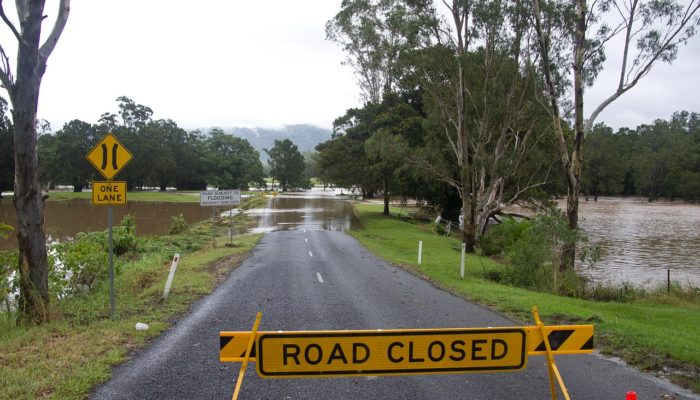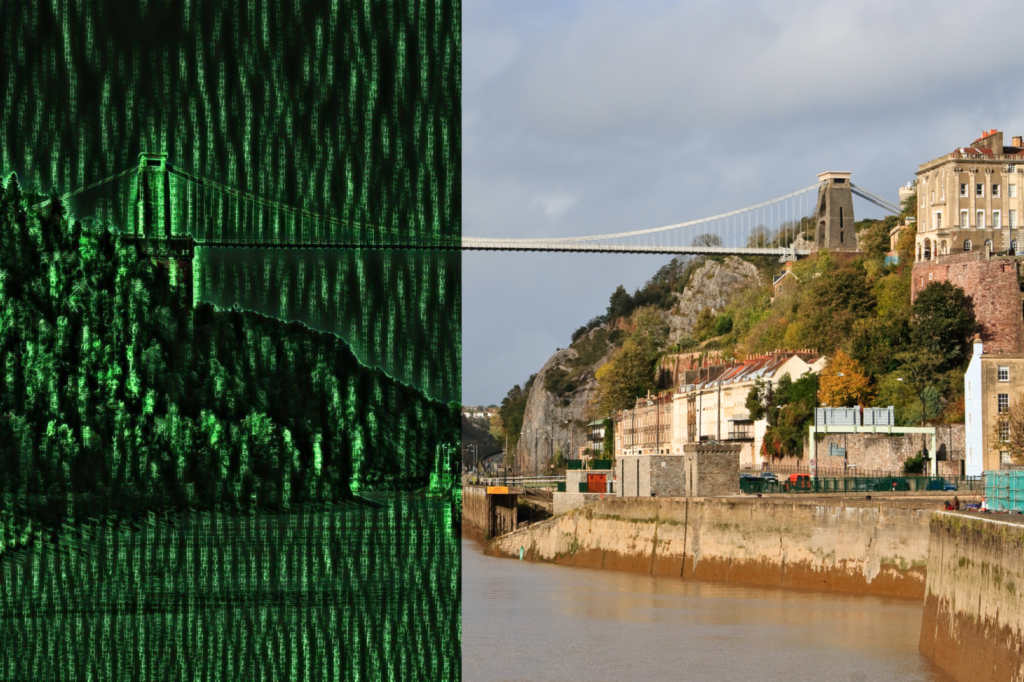
Transport networks are crucial to our lives, from commuting to work to reach health care facilities, from the transport of goods to leisure travelling. To quote Robin Chase, an American transport entrepreneur: “Transportation is […] the glue of our daily lives. When it goes well, we don’t see it. When it goes wrong, it negatively colours our day, makes us feel angry and impotent, curtails our possibilities.” And indeed, transport networks can be negatively affected by natural hazards, such as earthquakes or floods. What is research doing to help enhance transportation networks and systems’ resilience against natural hazards? I asked Dr Maria Pregnolato, winner of the 2021 Natural Hazards Division Outstanding Early Career Scientist Award, for her scientific achievements.

Dr Maria Pregnolato
Maria Pregnolato obtained her MSc in Building Engineering from the University of Pavia (IT) in collaboration with the Tongji University of Shanghai (CH) and her PhD from Newcastle University (UK). Her PhD research investigated the impact of flooding on urban transport networks and developed an integrated flood-transport model. She is now a Lecturer at the Department of Civil Engineering and EPSRC (Engineering and Physical Sciences Research Council) Fellow at the University of Bristol (UK). Recently, she has been focusing on hydrodynamic modelling of flooding impact on bridges, including scouring risk management and structural health monitoring. Also, the latest research has looked at smart bridges and Digital Twins, exploring the role of sensing and digitalisation within infrastructural assets.
I am investigating urban infrastructure and natural hazards because disasters “are not natural”: natural hazards become disasters when communities are exposed, infrastructure is not resilient, and preparedness planning does miss.
First of all, congratulations on your award, Maria! And as anticipated above, what is research doing to help enhance transportation networks and systems resilience against natural hazards?
Thank you! As you said, transportation – and more in general infrastructure – networks are crucial in our everyday life. Simultaneously, they are exposed to natural hazards, which could disrupt their smooth functioning and performance. Research is thus tackling the complex relations between infrastructure and natural hazards in different ways.
For example, with my research, I am looking at how flooding disrupts urban infrastructure networks, such as roads and bridges. My studies support urban stakeholders, like city councils, planners, civil responders, and infrastructure operators, in managing flood risk by providing information about flood impact to the road network and the implications of flooded roads for emergency management [1]. My research adopts a multi-disciplinary approach that combines hydraulics, spatial analysis, and economics and applies advanced simulation tools tailored to multiple climate and adaptation scenarios [2].
Very recently, I have been focusing on the ‘cascading effect’ among interdependent infrastructure; an example is a power supply outage that may cause the failure of the rail or communication network. Investigating systemic risk and resilience is currently one of the most significant challenges on the natural hazard community’s agenda; in this case, research can provide analysis of network interactions and relative consequences [3]. Interrelations could also be explored from the perspective of ‘compounding effect’ among hazards; an example is a tsunami triggered by an earthquake. This topic is another priority on the research agenda, explored by various groups, for example, the DAMOCLES COST Action. Ultimately, the goal is to advance our comprehensive understanding of flooding disruption to infrastructure for implementing preparedness plans and remedial actions.
What is a specific challenge that you are currently tackling with your research?
Flooding impact on riverine bridges is one of the specific challenges my research is tackling. Bridges are critical for any society since they are crucial elements of connection in the transportation system. However, they are ageing assets in most countries worldwide and mostly exposed to natural hazards, particularly riverine bridges to flooding. The interaction among water flow, bridge structure and transport network is complex and not yet fully understood.
To improve our understanding of this complex interaction between water and structures, a stream of my research investigates how to assess flooding impact for vulnerable bridges to enhance cities and communities’ resilience. For example, we considered the flood-prone town of Carlisle (UK) as a case study and modelled hydrodynamic forces as demand on the bridge structure. In this way, we were able to advance a reliability analysis of the structure under the modelled loading and assess the overall impact at a systemic level [4].
What do you think is an aspect of your research field that will become more and more relevant in the next decade?
I think digitalisation is becoming more and more relevant to Civil Engineering. I see great potential in the digital transformation of urban infrastructure through the Internet of Things (IoT), Artificial Intelligence (AI), and Machine Learning (ML) for optimising infrastructure management and improving asset performance. The concept of a Digital Twin is one of the uncontested protagonists of this change.
A Digital Twin is a realistic digital representation of assets, processes and systems with a defining characteristic of a data connection between the real world and its digital replica (Figure 2). Digital Twins are forecasted to sustain half of all large industrial companies by 2021, and multiple projects are flourishing in the field of manufacturing (EU project IoTwins), healthcare (EU project DIGIPREDICT) and energy (EU project TwinERGY). However, in Civil Engineering, their actual application and technology are still mainly at the prototype stage. Research is needed to tackle the knowledge challenge and operations, value proposition, and physical-virtual architecture standards underpinning Digital Twins’ advancement in the built environment. Our most recent study focuses on this topic. It explores a workflow process for developing a Digital Twin for an existing structure, using the iconic Clifton Suspension Bridge in Bristol (UK) as a case study [5].

Figure 2: Example of the Clifton Suspension Bridge with an actual photo on the right side and its Digital Twin on the left side. Original image distributed by Wikipedia.
Finally, what is your favourite aspect of your research?
I love research – in general – because it allows you to express the power of the mind and engages you in creating knowledge to solve real-world issues. I am investigating urban infrastructure and natural hazards because disasters “are not natural”: natural hazards become disasters when communities are exposed, infrastructure is not resilient, and preparedness planning does miss. My favourite aspect of my research is the purpose of supporting cities to manage risk better and develop resilience by co-working with decision-makers and stakeholders.
If you attend the #vEGU21 Gather Online, don’t miss Maria Pregnolato’s lecture on Thursday 22 April 2021 h11:15, more details on the official conference programme.
References
- Arrighi C., Pregnolato M., Dawson R., Castelli F. (2019). Engineering society flood preparedness: a case study for the Civil Protection. Sci. Tot. Env., 654, 1010-1022. https://doi.org/10.1016/j.scitotenv.2018.11.191
- Pregnolato M., Ford A., Glenis V., Wilkinson S., Dawson R. (2017). Impact of flooding and urban adaptation in a changing climate. J. of Infr. Syst., 23(4), 04017015 1-13. https://doi.org/10.1061/(ASCE)IS.1943-555X.0000372
- Arrighi, C., Pregnolato, M. and Castelli, F. (2020). Indirect flood impacts and cascade risk across interdependent linear infrastructures. Nat. Hazards Earth Syst. Sci. https://doi.org/10.5194/nhess-2020-371
- Pregnolato, M., Winter, A.O., Mascarenas, D., Sen, A.D., Bates, P. and Motley, M.R. (2020). Assessing flooding impact to riverine bridges: an integrated analysis. Nat. Hazards Earth Syst. Sci. https://doi.org/10.5194/nhess-2020-371
- Gunner S., Voyagaki E., Gavriel G., De Risi, R., Carhart, N., Macdonald, J., Tryfonas, T., Taylor, C., Pregnolato, M. (2021). A Digital Twin prototype for the Clifton Suspension Bridge (UK). 10th International Conference on Structural Health Monitoring of Intelligent Infrastructure (SHMII-10), June 30- July 1
Post edited by Gabriele Amato, Shreya Arora.
